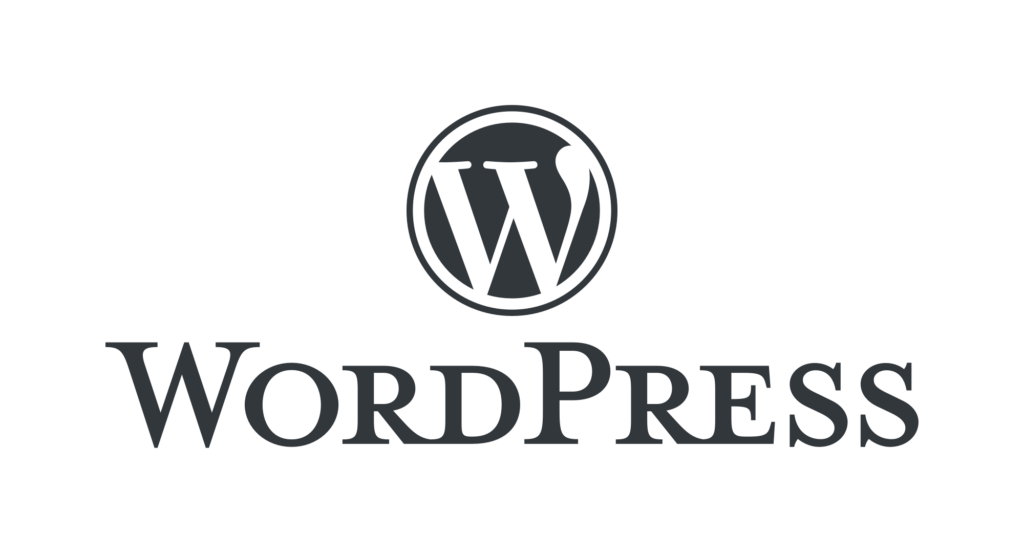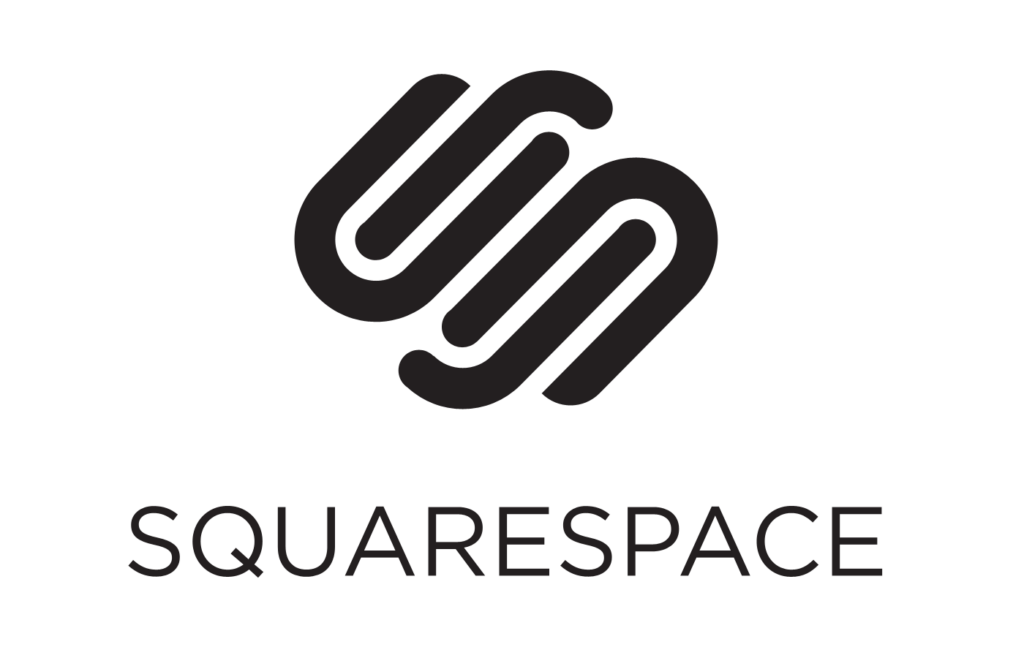
In today’s digital era, having a website is essential for businesses, professionals, and individuals looking to establish a strong online presence. Building a website may seem daunting at first, but with the right guidance and tools, anyone can create a stunning and functional website. In this blog post, we will walk you through the process of how to make a website, from purchasing a domain to launching and optimizing it. So, let’s dive in and explore the steps involved in bringing your website to life.
To start your website journey, the first step is to purchase a domain name. Platforms like Domain.com provide a wide selection of domain names to choose from. Select a domain name that reflects your brand or personal identity and is easy to remember. Keep in mind that your chosen domain should ideally align with your website’s purpose and target audience.
Next, you need to choose a website platform that will serve as the foundation for your website. Here are a few popular options, each with its own strengths:

WordPress has long been celebrated as a versatile and user-friendly platform, making it an excellent choice, especially for beginners in the world of web development and content management. Its reputation is well-earned, thanks to its user-friendly interface and the vast array of customization options available through themes and plugins. Let’s explore why WordPress is not just a good choice, but an exceptional one for newcomers to the digital landscape.
1. User-Friendly Interface: At its core, WordPress is designed with simplicity in mind. Even if you’ve never built a website before, you’ll find its intuitive interface welcoming and easy to navigate. The dashboard provides a straightforward way to manage your content, whether you’re writing blog posts, creating pages, or adding media. The familiarity of its interface, akin to a word processing software, minimizes the learning curve and allows beginners to get started quickly.
2. Endless Customization with Themes: WordPress offers an extensive library of themes, both free and premium, catering to a wide range of styles and purposes. Whether you’re building a personal blog, an online portfolio, an e-commerce site, or a business website, you’ll find a theme that suits your needs. These themes are designed with responsiveness in mind, ensuring your site looks great on desktops, tablets, and mobile devices.
3. Extensive Plugin Ecosystem: The true power of WordPress lies in its plugin ecosystem. Plugins are like apps for your website, adding functionality and features with just a few clicks. From SEO optimization and contact forms to social media integration and e-commerce solutions, there’s a plugin for almost everything. This vast selection allows beginners to expand their website’s capabilities without any coding expertise.
4. SEO-Friendly: WordPress is inherently SEO-friendly, which is crucial for improving your website’s visibility in search engine results. It generates clean and structured code, making it easier for search engines to crawl and index your content. Additionally, there are numerous SEO plugins available, such as Yoast SEO, that provide valuable guidance and optimization tools to help you rank higher in search results.
5. Supportive Community: WordPress boasts a thriving and supportive community of users, developers, and experts. If you encounter any challenges or have questions, you’ll find a wealth of resources at your disposal. Forums, documentation, online tutorials, and WordPress meetups are just a few avenues where you can seek assistance and share knowledge with fellow enthusiasts.
6. Scalability and Growth: As a beginner, you may start with a simple website, but WordPress can grow with you. Whether you want to add more features, expand your content, or even transform your site into a full-fledged online business, WordPress provides the flexibility to scale as your needs evolve.
7. Regular Updates and Security: WordPress is actively maintained and regularly updated to address security concerns and improve performance. This commitment to security ensures that your website remains safe from potential threats, offering peace of mind to beginners and experienced users alike.
8. Cost-Efficiency: WordPress itself is open-source software, meaning it’s free to use. While you may invest in premium themes or plugins for added functionality, the overall cost of setting up and maintaining a WordPress site is often significantly lower than other proprietary solutions.
WordPress is not just a good choice for beginners; it’s a powerhouse of a platform that empowers newcomers to the web development and content management arena. Its user-friendly interface, extensive customization options through themes and plugins, SEO-friendliness, and strong community support make it the go-to choice for those looking to create websites that are not only functional but also visually appealing. Whether you’re building a personal blog, launching an online business, or simply exploring the digital world, WordPress offers endless possibilities and a welcoming environment for your journey.

Squarespace, a popular and well-regarded website-building platform, has gained widespread recognition for its user-friendly approach to web design. With its visually appealing templates and intuitive drag-and-drop editor, Squarespace stands out as an exceptional choice for creative professionals and small businesses alike. In this exploration, we’ll delve deeper into why Squarespace is the ideal platform for those seeking an elegant and hassle-free web design experience.
1. Visually Appealing templates: Squarespace takes the guesswork out of website design by offering a stunning selection of professionally designed templates. These templates cover a wide range of styles and industries, allowing users to find a look and feel that aligns perfectly with their brand or creative vision. Each template is crafted with an emphasis on aesthetics, ensuring that your website will impress visitors with its visual appeal.
2. Intuitive Drag-and-Drop Editor: At the heart of Squarespace’s user-friendliness lies its intuitive drag-and-drop editor. This user interface empowers individuals with little to no coding experience to create and customize their websites effortlessly. You can easily add and arrange elements like text, images, videos, and interactive features with a simple click and drag. This level of control gives you the freedom to shape your website according to your unique requirements.
3. Suitable for Creative Professionals: Creative professionals, such as artists, photographers, designers, and musicians, find Squarespace particularly well-suited to showcase their portfolios and talents. The platform’s emphasis on visual aesthetics and multimedia integration allows artists to present their work in a visually stunning and immersive manner. Whether it’s a gallery of paintings, a photography portfolio, or an online music store, Squarespace provides the tools to captivate audiences with creativity.
4. Small Business-Friendly: Small businesses often face the challenge of establishing a professional online presence without the resources of larger enterprises. Squarespace addresses this need with features tailored for small businesses. It offers e-commerce capabilities, allowing entrepreneurs to set up online stores quickly. Inventory management, secure payment processing, and customizable product listings make Squarespace a comprehensive solution for small businesses looking to expand their reach.
5. Mobile Responsiveness: In an era where mobile browsing is prevalent, Squarespace ensures that your website looks and functions flawlessly on smartphones and tablets. All Squarespace templates are inherently responsive, adapting to different screen sizes seamlessly. This mobile responsiveness is not only essential for user experience but also positively impacts search engine rankings, improving your website’s discoverability.
6. Blogging and Content Management: Content marketing is a cornerstone of online success, and Squarespace excels in this area. It offers robust blogging tools, enabling users to publish and manage content efficiently. From text-based articles to image-rich posts, Squarespace makes it easy to engage with your audience through a blog, keeping your website dynamic and informative.
7. Integrated Analytics: Squarespace includes built-in analytics tools that provide valuable insights into your website’s performance. You can track visitor data, analyze traffic sources, and monitor engagement metrics. This data-driven approach empowers users to make informed decisions for optimizing their websites and content.
8. Customer Support and Resources: Squarespace offers a comprehensive support system, including live chat, email support, and an extensive knowledge base. Whether you have technical questions or need guidance on design and content, Squarespace’s customer support team is readily available to assist you.
Squarespace’s reputation as a user-friendly web design platform is well-deserved. Its visually appealing templates, intuitive drag-and-drop editor, suitability for creative professionals and small businesses, and an array of features make it an exceptional choice for crafting elegant and functional websites. Squarespace’s commitment to simplifying web design empowers users to focus on their content and creativity, ultimately resulting in beautiful and effective online presences that capture the essence of their brands and visions.

In the ever-evolving landscape of web design, Webflow has emerged as a dynamic force that offers both beginners and experienced designers the opportunity to craft visually stunning and highly functional websites. The platform is celebrated for its robust visual web design interface and extensive customization options, making it an ideal choice for those seeking complete control over their website’s design and functionality. Let’s dive deeper into why Webflow stands out as a powerful tool for the discerning web designer.
1. Visual Web Design Interface: At the core of Webflow’s appeal lies its visual web design interface. Unlike traditional coding-centric approaches, Webflow offers an intuitive and user-friendly environment where designers can visually create and manipulate every aspect of their websites. With a simple drag-and-drop functionality, users can position elements, style fonts, adjust colors, and fine-tune layouts with remarkable ease. This hands-on approach empowers designers to bring their creative visions to life without being limited by coding constraints.
2. Advanced Customization: Webflow is revered for its advanced customization capabilities, which extend well beyond the limitations of template-based platforms. Every element, from the header to the footer, can be meticulously customized to match the exact specifications of your design concept. This level of precision is invaluable for designers and businesses seeking a unique and tailored online presence.
3. Interactivity and Animations: Webflow shines in its support for interactivity and animations. Designers can seamlessly integrate interactive elements, such as buttons, forms, and sliders, to enhance user engagement. Additionally, Webflow provides a robust animation toolset, allowing designers to create captivating animations and transitions without relying on external scripts or plugins.
4. Seamless Responsiveness: With the proliferation of mobile devices, ensuring that your website looks and functions flawlessly on various screen sizes is paramount. Webflow simplifies the process of creating responsive designs. Designers can define how their websites adapt to different devices, ensuring an optimal user experience across desktops, tablets, and smartphones.
5. Code Control: For designers who are comfortable with code, Webflow offers the flexibility to dive into the HTML, CSS, and JavaScript underpinning the design. This dual approach, combining visual design with code control, caters to a wide spectrum of designers – from those who prefer a code-free experience to those who want to fine-tune every line of code.
6. E-Commerce Integration: Webflow is not just a design tool; it’s a full-fledged web platform that includes e-commerce functionality. Designers and businesses can set up and manage online stores seamlessly, complete with features like product listings, secure payment processing, and inventory management. This versatility makes Webflow an excellent choice for businesses looking to expand their online presence.
7. Hosting and Scalability: Webflow offers hosting services, simplifying the process of deploying and maintaining your website. The platform can accommodate websites of all sizes, from small portfolios to complex e-commerce platforms. As your website grows, Webflow provides the scalability needed to support increased traffic and functionality.
8. Collaborative Workflows: Webflow’s collaborative features facilitate teamwork among designers, developers, and content creators. Multiple team members can collaborate on a project simultaneously, streamlining the design and development process. This collaborative approach enhances productivity and encourages creative collaboration.
Webflow stands as a testament to the evolution of web design, offering a potent blend of visual design freedom and advanced customization capabilities. Its intuitive interface, extensive design control, support for interactivity, responsiveness, code control, e-commerce integration, hosting, and collaboration features combine to provide a holistic web design solution. Whether you’re an experienced designer seeking complete creative control or a business looking to establish a unique online presence, Webflow empowers you to push the boundaries of web design and create websites that captivate and engage visitors. With Webflow, the only limit is your imagination.

Wix has emerged as a shining star, catering to both beginners and seasoned designers alike. The platform’s hallmark features are its beginner-friendly approach, a vast library of templates, and an intuitive drag-and-drop editor. Wix is renowned for being a go-to choice for small businesses and individuals who seek to swiftly and efficiently create a stunning online presence. Let’s delve deeper into why Wix is celebrated as a platform that effortlessly bridges the gap between website creation and its audience.
1. Beginner-Friendly Design: Wix has earned its reputation as a beginner-friendly platform, thanks to its straightforward and user-centric approach. The interface is designed with simplicity in mind, enabling individuals with no prior web design experience to embark on their website-building journey with confidence. From the moment you sign up, Wix guides you through the process, making it accessible to users of all skill levels.
2. Extensive Template Library: One of Wix’s standout features is its vast collection of templates. These templates span various industries and design aesthetics, offering users a wide array of options to choose from. Whether you’re a photographer, a restaurateur, a blogger, or an artist, you’ll find a template that aligns perfectly with your vision and needs. These professionally designed templates serve as a foundation upon which you can build your unique website.
3. Intuitive Drag-and-Drop Editor: At the heart of Wix’s user-friendly experience lies its intuitive drag-and-drop editor. This feature empowers users to visually create and customize their websites effortlessly. You can add text, images, videos, contact forms, and interactive elements with a simple click and drag. This intuitive approach allows you to see your changes in real-time, eliminating the need for coding skills and minimizing the learning curve.
4. Ideal for Small Businesses: Small businesses often face the challenge of establishing a professional online presence without the resources of larger enterprises. Wix addresses this need by offering a range of features tailored to small businesses. These include e-commerce capabilities, appointment scheduling, and contact forms, making it a comprehensive solution for entrepreneurs looking to expand their reach and engage with their target audience.
5. SEO Optimization: A well-designed website is only effective if it’s discoverable by search engines. Wix recognizes the importance of SEO and offers built-in tools to optimize your website for search engines. Users can customize meta tags, manage redirects, and enhance their site’s overall visibility in search engine results.
6. Mobile Responsiveness: With the prevalence of mobile browsing, ensuring that your website is mobile-friendly is imperative. Wix templates are designed to be responsive, automatically adapting to various screen sizes. This feature ensures that your website looks and functions seamlessly on smartphones and tablets, providing an optimal user experience.
7. App Market: Wix’s App Market extends the functionality of your website by offering a wide range of third-party apps. These apps cover everything from social media integration and marketing tools to e-commerce extensions and booking systems. The App Market empowers users to add additional features to their websites as their needs evolve.
8. Customer Support: Wix provides a comprehensive support system that includes a knowledge base, email support, and a community forum. Users can seek assistance for technical queries, design advice, and troubleshooting, ensuring that they are never left stranded during their website-building journey.
Wix has earned its acclaim as a beginner-friendly platform that empowers individuals and small businesses to create professional websites swiftly and efficiently. Its intuitive design interface, extensive template library, responsive editor, small business features, SEO optimization, mobile responsiveness, App Market, and robust customer support make it a holistic website-building solution. Wix bridges the gap between design aspiration and realization, ensuring that your online presence is as vibrant and captivating as your vision. With Wix, the world of website creation is truly at your fingertips.

When it comes to establishing an online store, Shopify has solidified its position as a market leader, offering a comprehensive platform that caters specifically to e-commerce needs. Renowned for its robust e-commerce features, secure payment gateways, and a plethora of customizable templates designed for online selling, Shopify stands as the go-to choice for entrepreneurs and businesses embarking on their digital retail journey. Let’s delve deeper into why Shopify is hailed as an exceptional platform for online sellers.
1. Robust E-Commerce Features: Shopify is tailored to the needs of online retailers. It offers an impressive array of e-commerce features that cover everything from inventory management and order processing to customer relationship management and marketing. Entrepreneurs can easily set up and manage their online stores, streamlining the entire sales process from product listing to customer checkout.
2. Secure Payment Gateways: Trust and security are paramount in e-commerce, and Shopify takes this aspect very seriously. The platform provides a range of secure payment gateways, including Shopify Payments, which simplifies the payment process for customers. These gateways are designed to protect sensitive financial information and provide a seamless and secure shopping experience.
3. Customizable Templates: Shopify boasts a diverse collection of customizable templates, known as themes, specifically crafted for online selling. Whether you’re selling fashion, electronics, handmade crafts, or digital products, you can find a theme that aligns with your brand identity and product catalog. These themes are not just visually appealing but also optimized for conversion, ensuring a smooth shopping experience for your customers.
4. Scalability and Flexibility: Shopify caters to businesses of all sizes, from startups to established enterprises. Its scalability allows businesses to expand their operations effortlessly as they grow. Whether you have a handful of products or an extensive catalog, Shopify can accommodate your needs. The platform also provides flexibility through its app store, offering a wide range of third-party apps that extend functionality to meet specific requirements.
5. Mobile Responsiveness: In an era dominated by mobile devices, Shopify recognizes the importance of mobile responsiveness. All Shopify themes are designed to be mobile-friendly, ensuring that your online store looks and functions seamlessly on smartphones and tablets. This mobile optimization is not only user-centric but also essential for improving search engine rankings.
6. SEO Optimization: Shopify equips users with tools and features for search engine optimization (SEO). You can optimize product pages, meta tags, and alt text for images, ensuring that your online store ranks well in search engine results. Higher visibility means increased organic traffic and potential sales.
7. Analytics and Insights: Shopify provides robust analytics and reporting features that offer valuable insights into your online store’s performance. You can track sales, monitor customer behavior, and assess the effectiveness of marketing campaigns. These insights enable data-driven decision-making, allowing you to refine your strategies for improved results.
8. Customer Support: Shopify offers reliable customer support via email, chat, and phone. Users can access a wealth of resources, including a knowledge base, forums, and community groups. Whether you have technical queries or need assistance with store setup, Shopify’s customer support ensures you have access to guidance and solutions.
Shopify is the ultimate platform for entrepreneurs and businesses looking to venture into the world of e-commerce. Its robust e-commerce features, secure payment gateways, customizable templates, scalability, mobile responsiveness, SEO optimization, analytics, and dedicated customer support make it a one-stop solution for online selling. With Shopify, you can confidently bring your products or services to a global audience, knowing that you have a powerful and reliable e-commerce partner by your side. Whether you’re starting small or aiming for significant growth, Shopify empowers you to build and manage your online store with confidence and success.
Most domain purchase platforms also provide hosting services. However, if you choose WordPress as your website platform, you may consider using a dedicated WordPress hosting provider like WPEngine for optimal performance and reliability.
Once you have chosen your platform and set up hosting, it’s time to launch your website. Take the time to familiarize yourself with the platform, as there may be a learning curve involved. Refer to instructional videos or seek assistance from a professional agency like Mosaic to ensure a smooth launch.
With the platform set up, it’s time to start building your website. Utilize the customization options provided by your chosen platform to design a visually appealing and user-friendly website. Ensure that your website looks good on all screen sizes by using responsive design techniques. Additionally, prioritize installing an SSL certificate to secure your website and inspire trust among visitors. Don’t forget to integrate Google Analytics to track user activity and gain valuable insights into your website’s performance.
Building a website is an exciting journey that allows you to establish a strong online presence. By following the steps outlined in this guide, you can create a stunning and functional website. Remember to choose a domain, select a suitable website platform such as WordPress, Squarespace, Webflow, Wix, or Shopify, set up hosting, launch the website, and take the time to learn the platform. Test your website thoroughly to ensure it functions as expected, and consider factors such as responsive design, SSL certificates, and Google Analytics integration for a seamless user experience. With determination and a willingness to learn, you’ll have a remarkable website up and running in no time.
Need help building a website? We can help!